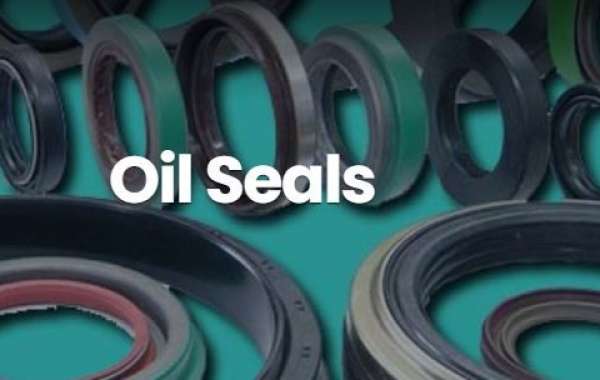The world of machines, from the mighty engines that propel our vehicles to the delicate whirring of household appliances, relies on a multitude of components working in perfect harmony. But behind the scenes, there exists a humble yet crucial player: the oil seal. These unsung heroes perform a vital task – keeping lubricants in and contaminants out, ensuring the smooth operation and longevity of machinery.
Understanding the Essential Role of Oil Seals
An oil seal, also known as a rotary shaft seal, is a precisely engineered component that forms a barrier between a rotating shaft and the housing it passes through. Its primary function is twofold:
Lubricant Retention: Oil seals prevent the leakage of lubricating fluids (oil, grease) from the internal chamber of a machine. This ensures that bearings and other moving parts are adequately lubricated, minimizing friction and wear.
Contamination Exclusion: They act as a shield, preventing external contaminants like dust, dirt, and water from entering the internal compartment. Contaminants can cause abrasive wear, disrupt lubrication, and lead to premature component failure.
The Anatomy of an Oil Seal:
While oil seals come in various designs depending on the application, some core elements are common:
- Sealing Lip: This is the heart of the oil seal, typically made from a flexible and resilient material like nitrile rubber, fluoroelastomer (FKM), or silicone. The sealing lip forms a tight contact with the shaft, creating a barrier against leakage and contamination.
- Spring: A spring (often helical) exerts constant pressure on the sealing lip, ensuring it remains in firm contact with the shaft, even under variations in temperature and pressure.
- Metal Case: The metal case provides structural integrity and houses the sealing lip and spring. It's typically made from stamped steel or stainless steel for durability.
The Diverse World of Oil Seals:
Oil seals come in a wide variety of shapes, sizes, and materials to cater to the specific needs of different applications. Some common types include:
- Single Lip Seals: The most basic and widely used type, featuring a single sealing lip for general-purpose applications.
- Double Lip Seals: Offer enhanced sealing performance with two sealing lips, ideal for applications with higher pressure or contamination risks.
- TC (Temperature Compensated) Seals: Designed with special materials and configurations to withstand extreme temperature fluctuations.
- Cassette Seals: These modular seals consist of interchangeable components, allowing for customization and easier installation.
CFW Oil Seals and NOK Oil Seals: Renowned Names in Sealing Solutions
Within the vast world of oil seals, certain brands have established a reputation for excellence. CFW Oil Seals and NOK Oil Seals are two such examples, known for their commitment to quality and innovation.
- CFW Oil Seals: A leading manufacturer of high-performance oil seals, CFW offers a comprehensive range of seals for demanding applications across various industries. Their expertise lies in developing seals that can withstand extreme temperatures, high pressure, and harsh environments.
- NOK Oil Seals: Renowned for their cutting-edge materials and design, NOK Oil Seals are at the forefront of sealing technology. They offer a diverse range of seals for automotive, industrial, and aerospace applications, known for their exceptional durability and reliability.
Seal Kits: A Comprehensive Solution for Maintenance
Seal kits group various oil seals, along with other related components like O-rings and gaskets, required for servicing a specific machine or engine. These kits offer a convenient and cost-effective way to replace worn-out seals during maintenance procedures. They ensure that all necessary seals are readily available, minimizing downtime and simplifying the maintenance process.
Choosing the Right Oil Seal for Your Needs:
Selecting the appropriate oil seal for your application is crucial for optimal performance and longevity. Here are some key factors to consider:
- Shaft Material and Surface Finish: The seal material must be compatible with the shaft material to prevent excessive wear and ensure a proper seal.
- Operating Temperature and Pressure: Choose a seal material that can withstand the expected temperature range and pressure levels within the system.
- Lubricant Type: The seal material needs to be compatible with the type of lubricant being used (oil or grease) to avoid degradation.
- Shaft Speed and Run Time: High-speed applications might require specialized seals with low friction properties.
Conclusion: Oil Seals – The Silent Guardians of Machine Efficiency
Oil seals, though often unnoticed, play a critical role in ensuring the smooth operation and extended lifespan of machinery. From the complex engines that power our vehicles to the everyday appliances that make our lives easier, oil seals work tirelessly behind the scenes, keeping lubricants in and contaminants out. By understanding the types, functions, and selection criteria for oil seals, you can ensure that your machines operate at peak performance for years to come. When choosing replacements, consider reputable brands
See more








